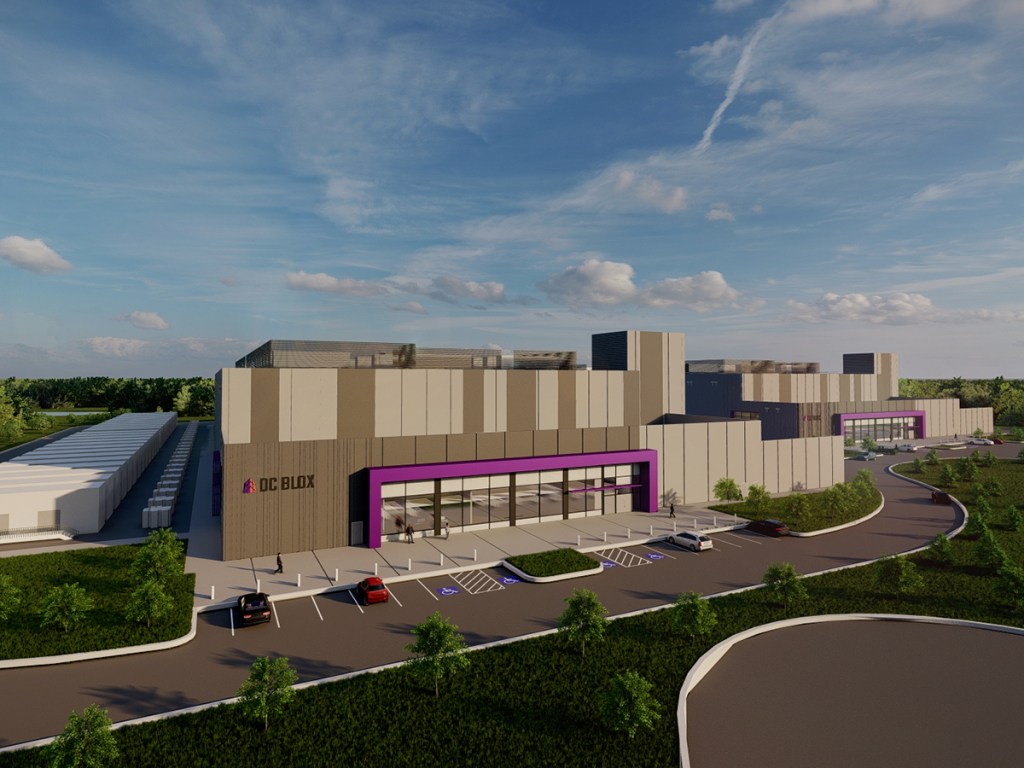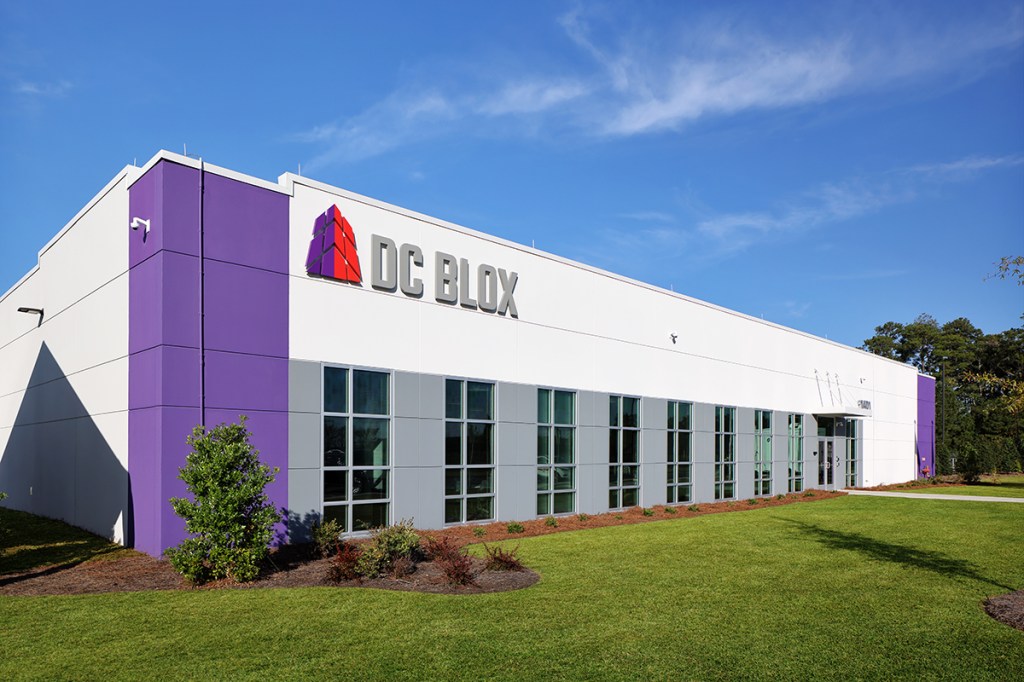Are Data Centers Immune to CRE Market Forces?
In this 2025 outlook, experts weigh in on prospects for this increasingly popular asset class.
The potential for data centers seems limitless. Not only are these facilities getting larger and more advanced, but they’re also becoming critical components of the U.S. infrastructure.
The National Security Memorandum on AI aims to accelerate AI development, supporting the next generation of supercomputers to come online. This could potentially unlock more incentives for developers, forge new partnerships and streamline processes for upgrading the energy grid that backs all these facilities.

Data centers have retained their competitive cap rates relative to the broader commercial real estate market, with fundamentals remaining strong throughout 2024 and suggesting even stronger performance going forward.
Construction across primary markets increased 70 percent—to nearly 3.9 gigawatts—in the first half of 2024, according to CBRE research. This, coupled with a record-low vacancy rate of 2.8 percent, shows the tremendous demand for IT capacity across the country. Nearly 80 percent of the 3,872 megawatts under construction are already preleased, CBRE Executive Managing Director for Data Center Solutions Pat Lynch underlined for Commercial Property Executive.
A growing share of this preleased capacity is directly tied to AI applications, but the majority remains cloud computing, which also plays a major role in developing new technologies. However, the race for AI has prompted more institutional investors to jump in this year, with a plethora of new massive data center investments from companies such as Prologis, Blackstone, BlackRock, Blue Owl Capital, Digital Realty, Equinix and many, many others.
It’s worth noting that most of these new investments are for developing new capacity. The AI-ready, hyperscale data center of the future will need more power, more space and more resilient infrastructure, which translates to more money being poured into the sector.
Building the data centers of the future
When it comes to how data centers are designed and developed, not much has changed. Third-party partners provide power, space, cooling and security as a service, but the scale has hit new levels. Everything is larger and denser, which comes with a unique set of challenges, according to Tom Traugott, senior vice president of strategy at EdgeCore Digital Infrastructure.
Securing power to support all this growth will remain the top consideration for data center development. Resilience, scale and simplicity will also be key. If a facility is too complex to develop, it usually diminishes its potential to scale, so considering the high-power requirements of AI and GPU clusters, developers must also accelerate delivery of large blocks of power capacity at the onset, as opposed to bringing power in use organically via slow ramp-up periods.
The amount of power per rack of IT equipment needed in a facility is rapidly increasing. An average data center today might be running traditional IT workloads at 6 to 10 kilowatts per rack. An AI application with high-performance servers, on the other hand, may require 40 to 50 kilowatts, with some going as high as 150 kilowatts per rack, said DC BLOX Vice President of Marketing & Product Management Bill Thomson.
The expected change in density means that the data center must be efficient with its initial workload, while also being able to scale in efficiency as density increases over time. This is beyond what air cooling technology can typically support, so technologies such as liquid cooling are also advancing rapidly. Closed-loop systems enable the reuse of process water, which effectively reduces the amount of water used overall. Traugott believes that these will not only become more common in 2025 but will likely be an industry standard for state-of-the-art facilities by 2026.
Furthermore, this new scenario has also prompted developers to seek advanced techniques that improve lead times, such as modular building blocks and manufacturing some components offsite. Another consequence is the migration to markets with cheaper power and land, and attractive tax incentives.

New clusters emerge
Outside the established Northern Virgnia area, the southern region is experiencing tremendous data center growth. CBRE data shows that Austin and San Antonio’s combined under-construction pipeline has more than quadrupled year-over-year, to 463 megawatts as of June. Great connectivity, nearby workforce, the low cost of reliable power and ample land for new construction will continue to drive interest in the Texas Triangle, according to Lynch.
But this is putting tremendous strain on the power grid. The Electric Reliability Council of Texas—which manages 90 percent of the load on the state’s power grid—estimates that electricity demand from customers such as data centers and cryptocurrency miners will total 54 billion kilowatt-hours in 2025, 60 percent more than the expected figure for 2024. This would represent around 10 percent of the total electricity consumption on the ERCOT grid for next year.
Generating more electricity is not the only challenge for data center developers. The next phase of growth is highly dependent on power transmission and distribution, as well.
In late 2023, DC BLOX completed the first cable landing station in the Mid-Atlantic in Myrtle Beach, S.C., housing three subsea cables owned by Google and Meta. Earlier this year, the company also completed a dark fiber network from the Myrtle Beach station to Atlanta, bringing global connectivity to the Southeast region and ultimately benefitting hyperscalers, international carriers, local enterprises and consumers, Thomson said.
In Georgia, the state’s largest electric utility provider landed $160 million in funding from the Department of Energy through the Grid Resilience and Innovation Partnerships Program to enhance flexibility and resilience. Earlier this year, Georgia Power received approval to expand its energy generation by 1.4 gigawatts through natural gas and solar battery facilities for future data center requirements.
DC BLOX is among several developers that have active projects in metro Atlanta. The company landed an anchor tenant at its Rockdale County, Ga., site and began construction, with 216 megawatts planned at full build-out. The company is also in active discussions with prospective customers for its Douglas County, Ga., project.
Access to capital remains, however, a key aspect for enabling power generation. Traugott believes private capital will need to enter the sector more meaningfully in 2025 and beyond, targeting utilities and grid reinforcement. “I could see more creative joint ventures or spinoffs emerge out of utilities to support more development,” he said.
EdgeCore secured a total of $4.2 billion in funding this year across multiple instances. Most recently, it landed $1.9 billion in equity toward the development of more hyperscale data centers in Mesa, Ariz., and Culpeper, Va. The latter is expected to become the next multi-gigawatt submarket in the state.
Given the massive power requirements, along with initiatives to reduce carbon emissions, data center developers are already looking at alternative sources. Geothermal energy is actively being used to power some of Meta’s data centers, for example. However, these advanced geothermal plants are mostly located in California, Utah and Nevada. So lately, operators have been looking at another source that has the potential to both meet demand and help with emissions: nuclear power.

What role will nuclear power play in the future of data centers?
Back in April, Amazon Web Services paid $650 million for Talen Energy’s 1,200-acre Cumulus data center campus in Berwick, Penn., which is directly connected to the nearby Susquehanna Steam Electric Station, the sixth-largest nuclear power plant in the U.S. AWS entered a power purchase agreement with Talen to power the campus with up to 960 megawatts for the next decade.
Besides a low carbon profile, nuclear power’s consistent baseload dynamic makes it a great option for the scaling needs of the next generation of data centers. It’s also the most stable source of clean energy, as it doesn’t depend on weather-related technologies—such as wind or solar—which have challenges regarding transmission and storage.
It looks like the data center sector has reached a point where these benefits outweigh the massive costs required to build and maintain a nuclear power plant.
In another deal last month, Constellation Energy signed a 20-year PPA with Microsoft, through which it aims to bring Unit 1 of the Three Mile Island facility back online. If the U.S. Nuclear Regulatory Commission approves the plan, Constellation expects to restart the reactor by 2028. This would also benefit Pennsylvania’s energy grid with an additional 800 megawatts, along with billions in tax revenue.
But not all operators and developers can afford a PPA with a large nuclear power plant. Nor are there enough of those in operation to make it a viable model for the sector at large.
READ ALSO: Why Big Data Centers Are Going Nuclear
Enter Last Energy—a Washington, D.C., based company that develops micro-modular nuclear power plants. It’s one among many similar companies that have begun to create tailored nuclear power solutions for private sector consumers.
The company wants to innovate on the power delivery model, Last Energy Senior Vice President of Commercial Michael Crabb told CPE. Its PWR-20 reactor can generate 20 megawatts and is fully deliverable in 24 months. Earlier this year, Last Energy showcased a life-size prototype at events in Houston and Washington, D.C., for data center executives and U.S. policymakers. The ultimate goal is to provide clean energy via an easily scalable model, quickly.
“One PWR-20 enables us to power that data center once it’s up and running, but a 20 MW increment and our focus on mass-manufacturability allows us to easily increase output as demand grows,” Crabb said.
Such micro reactors can also be more focused regionally. By operating outside the grid, these types of solutions can also alleviate concerns regarding over-straining energy infrastructure. Currently, Last Energy has PPAs for 80 units—1.6 gigawatts—almost half of which are for data center clients. Typical commitments range from 20 to 180 megawatts, meaning one to nine units to serve a given customer.
Another solution for reaching nuclear energy are small modular reactors, which typically have a capacity of a few hundred megawatts. These are different from what Last Energy is developing, both in size and technology. Some examples of companies producing SMRs include NuScale Power, Westinghouse Electric Power and Kairos Power—which earlier in October landed a PPA with Google for 500 megawatts.
The need for even more innovative solutions will only grow as data centers become an ever-increasing national economic and security priority. Therefore, expanding energy infrastructure is essential for growing economies, not only to support data centers, but also manufacturers, industrial sector companies, and the transition to electric vehicles, Traugott concluded.







You must be logged in to post a comment.